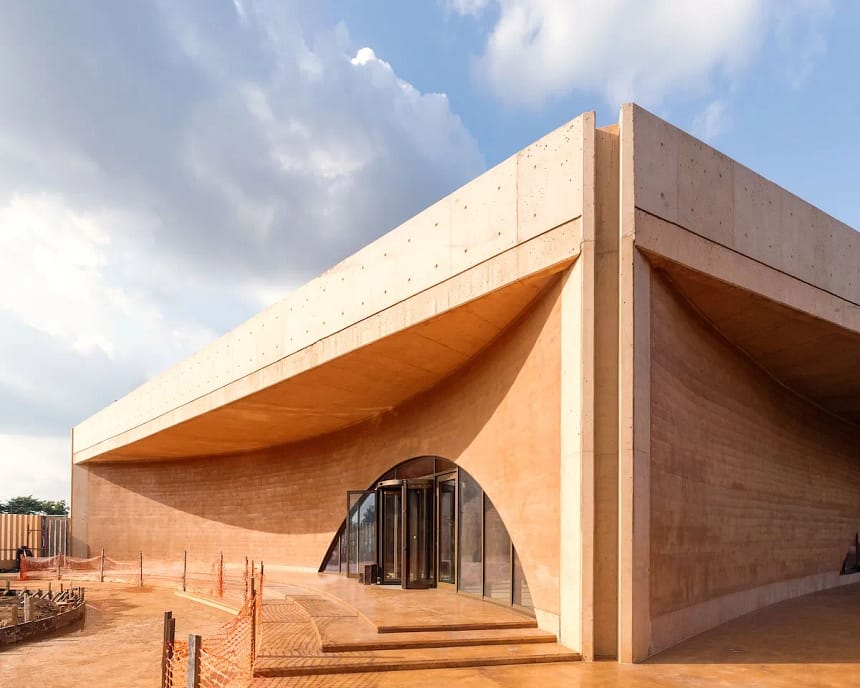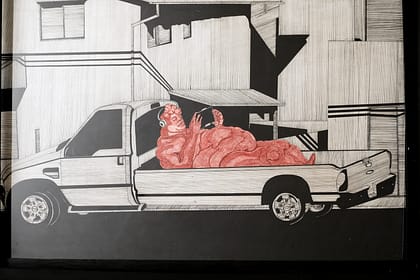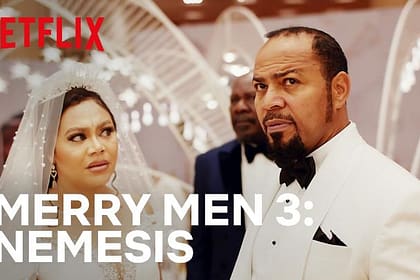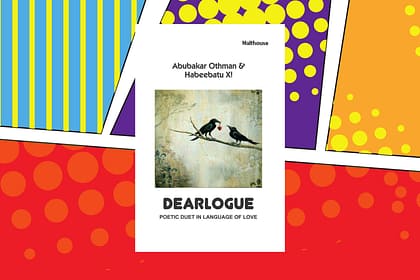The recent unveiling and impending grand opening of the Museum of West African Art (MOWAA) in Benin City, Nigeria, marks a pivotal moment for African art and culture, signalling a transformative shift in how cultural heritage is preserved, showcased, and developed on the continent. Described as “Nigeria’s answer to a modern museum,” MOWAA is poised to redefine the role of art institutions in West Africa and set a new global standard for cultural heritage initiatives.
MOWAA is not merely a conventional museum; it is envisioned as a dynamic, multi-faceted campus designed to serve as a hub for research, conservation, education, and artistic innovation. Its sprawling 15-acre campus, strategically located within the ancient moats of the Benin Kingdom and atop the ruins of ancient Benin City, embodies a deep connection to the region’s rich history.
The MOWAA Institute, the first purpose-built facility, already held a preview event in November 2024, showcasing its state-of-the-art features, including a 100-seat auditorium, conference rooms, a conservation library, and advanced laboratories for archaeology, conservation, and material science. This commitment to cutting-edge facilities, described as meeting “global standards of sustainability” with traditional West African rammed-earth techniques, directly challenges the past misconception that African institutions lack the capacity for world-class preservation. As Professor Shadreck Chirikure, an advisor to MOWAA, affirmed, the institution demonstrates that “contemporary Africans… are capable of looking after their heritage using the highest standards found anywhere in the world“.
MOWAA’s comprehensive approach aims to be “a blueprint, a convening point, and the centre of outreach that helps grow and sustain museum infrastructure throughout West Africa”. This extends beyond traditional exhibitions to encompass:
- Archaeological Research and Heritage Management: With active archaeological digs on site, MOWAA is directly engaging in discovering and documenting the region’s past. This focus includes documenting and developing participatory approaches to protect Nigeria’s earthen architecture, particularly Benin’s ancient moats.
- Conservation and Collections Management: The MOWAA Institute will house purpose-built arts storage, archives, and conservation labs, emphasising modern conservation practices with climate-controlled storage. Ore Disu, Director of the MOWAA Institute, highlighted the goal to “establish conservation and collections management practices that can be transferred between museums” across Nigeria and other African nations like Senegal and Ghana.
- Digital Lab and Accessibility: A dedicated digital lab within the Institute aims to make African cultural content more accessible through digital catalogues, unlocking possibilities for the heritage economy, education, and creative industries.
This multi-pronged strategy distinguishes MOWAA as a “living institution” that transcends the traditional museum model, fostering “collaboration and innovation”. It is set to reposition the cultural sector as a viable space for practitioners across borders and “reignite a thriving cultural scene, recentering Benin City as a place of creativity, innovation and knowledge exchanges”.
Impact of MOWAA’s Artist-Centric Model on West African Artistic Development
At its core, MOWAA champions an artist-centric model, aiming for African art spaces to work effectively “when artists are at the centre”. This vision is manifested through several key initiatives:
- Artist Residencies and Commissions: The museum plans to launch an artist residency program in spring 2025, providing “career-building opportunities for upcoming and under-represented talents to engage in interdisciplinary practice”. These residencies will serve as a “creative melting pot” where artists, scholars, and thinkers from around the world can explore identity, heritage, and cultural exchange, inspiring new ideas about contemporary West African identity.
- Co-curation and Co-creation of Heritage: MOWAA aims to be a platform for bringing artists and communities together to “co-curate and co-create heritage”. This collaborative approach is vital for ensuring that artistic development is rooted in local perspectives and contemporary realities.
- Support for Traditional Crafts and Contemporary Arts: The museum will support traditional crafts-making guilds and integrate traditional craftsmanship into the contemporary arts scene, thereby fostering skills development, learning, and outreach. The Artists’ Studios & Café, opening in late 2025, is being reimagined from a “stark symbol of colonialism” into a hub for “knowledge exchange and skills development” and “creative collaboration, forging connections between local and global artists”.
- Artist Council: To ensure programming remains artist-led, MOWAA has established an Artist Council comprising major names like Yinka Shonibare and Michael Armitage, who will offer mentorship and advise on exhibitions and research. This direct involvement of prominent artists emphasises MOWAA’s commitment to nurturing a new generation of creatives and fostering African-led scholarship.
By prioritising the needs and visions of artists, MOWAA intends to foster a dynamic artistic landscape where traditional and modern expressions fuse, challenging stereotypes and offering fresh perspectives on African identity, history, and social realities.
MOWAA: A New Paradigm for African Cultural Heritage Initiatives
MOWAA represents a profound shift in cultural heritage initiatives, particularly in its approach to heritage, repatriation, and modernity in African art. Benin City itself is “legendary for its cast bronze and carved ivory with religious and ceremonial significance,” much of which was “looted during colonialism”. The birth of MOWAA on the site of the former Oba of Benin palace directly addresses the legacy of colonial dispossession.
Heritage and Reclaiming Narratives: MOWAA’s mission is deeply intertwined with reclaiming historical narratives and strengthening cultural identity. The infamous Benin “Bronzes,” violently seized in 1897 and dispersed across Western museums, symbolise the “rich cultural and historical identity of the Benin Kingdom” and are central to calls for restitution. MOWAA was conceived at a time when global demands for the return of looted artefacts have intensified, with Germany and France already initiating formal restitution processes. While the British Museum, holding the largest collection of Benin Bronzes, remains largely resistant due to legal restrictions, MOWAA stands ready to accommodate returned artifacts. As Phillip Ihenacho, Executive Director of MOWAA, stated, the museum is “available as and when we are needed” to conserve or exhibit the bronzes.
The return of these artefacts is not just about physical objects; it’s a “symbolic act of healing, recognising historical injustices, and reinstating cultural narratives disrupted by colonial violence”. MOWAA will house historic collections, including works never before shown in Nigeria, allowing present and future generations to reconnect with their artistic and historical legacy. Ore Disu emphasised MOWAA’s role in giving “blacks and Africans a sense of their place in the world,” asserting that “No Akan, Yoruba or Edo person should ever doubt the sophistication of their ancestors”.
Modernity in African Art: MOWAA embraces modernity by showcasing contemporary African art and pushing artistic boundaries. The inaugural exhibition, “Nigeria Imaginary: Homecoming,” is an expanded presentation of Nigeria’s acclaimed pavilion from the Venice Arts Biennale 2024, demonstrating MOWAA’s commitment to global artistic dialogue and the evolving nature of African art. This exhibition, curated by Aindrea Emelife, invites artists to “unsettle inherited narratives” and “imagine Nigeria not as a single story, but as a constellation of histories, desires, ruptures, and dreams”.
The museum also plans to partner with universities and institutions worldwide to “redefine how African art is perceived, studied, and celebrated globally,” encouraging engagement with African art “on its own terms”. This forward-looking vision encompasses movements like Afrofuturism and Postcolonial Art, which critically engage with identity, social justice, and the legacy of colonialism. By fostering cross-cultural dialogue and influencing global art movements, MOWAA ensures that West African art continues to be a “vibrant and dynamic artistic landscape”.
Impact and Future Outlook
The birth of MOWAA has garnered significant international and local support, with funding from the Mellon Foundation, German Foreign Office, European Union, and Nigerian governments, among others. The National Commission for Museums and Monuments (NCMM) Director General, Olugbile Holloway, noted that MOWAA “has raised the bar. Anything we do at the federal level now has to match this vision”.
When MOWAA officially opens its campus to the public on November 11, 2025, it will mark a significant step towards achieving its ambitious vision. It is designed to be a “repository of our identity, something we must protect and take pride in”. By fostering collaboration, education, research, and conservation using the highest global standards, MOWAA is poised to not only preserve West Africa’s profound artistic heritage but also to nurture future generations of African researchers and artists, ensuring that “history and heritage come alive, offering the world a new way to engage with the richness of West African culture”. As curator Aindrea Emelife remarked, the opening of MOWAA is “not just an opportunity for Africa, but for the world”.








